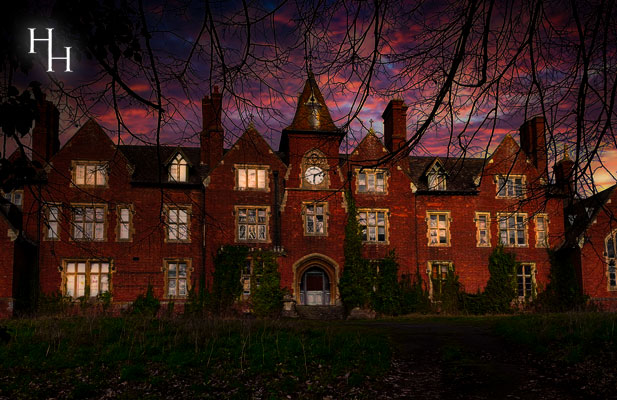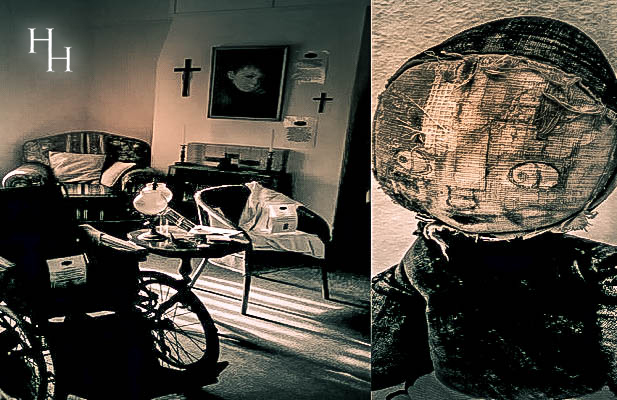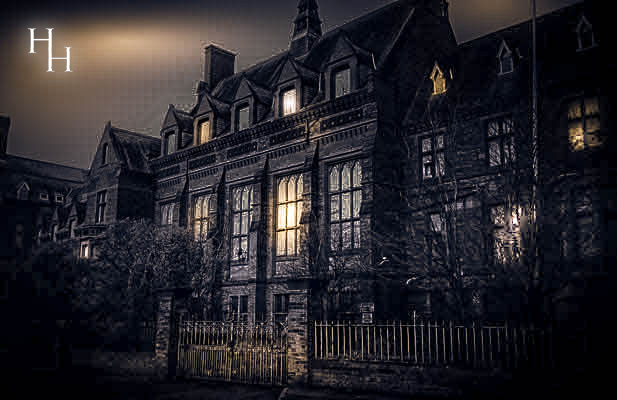Heskin Hall - Lancashire,
Sorry, we do not have any events for this location at the moment. Please keep an eye on our website for future dates.
Heskin Hall in Chorley, Lancashire is a haunted old manor house that now houses some amazing artefacts. If you are afraid of Annabelle dolls and Clowns then these are the rooms to avoid. Spooky Nights overnight ghost hunts at Heskin Hall will test even the hardiest ghost hunter. The haunted mansion stands in its own grounds and has links to royalty and Cromwell.
The estate has passed through many hands over the centuries and has seen its fair share of executions, murders and sinister activities. The spirit of a young girl is thought to be heard crying out and the footsteps of soldiers can be heard marching on the driveway. Furniture rattles for no reason and things fly out at you as if a spirit is annoyed by your actions. This ghost hunt will be an experience like no other as you carry out vigils amongst some truly amazing artefacts. However, like we mentioned earlier, beware of the Annabel Dolls and Clowns who sit staring at you eerily from their cabinets.
Ghosts of Heskin Hall
Overnight ghost hunts at Heskin Hall in Chorley, Lancashire have it all. This vast estate has a turbulent and torrid history of murder, execution and despair. With links to Cromwell and King Henry VII it still has the feel of a family residence. The rooms are scattered over 3 floors and so much of the original building is still intact. The hauntings of Heskin Hall are numerous and varied, from a young girl to the marching of soldiers. Things move at this location and it is obvious that the spirits do not like to be disturbed. With rooms housing spooky Dolls and a cheerfully malevolent looking Clown, there is a lot to worry about, particularly if you have an aversion to these types of objects.
There are said to be numerous ghosts that inhabit the hall itself. Two are believed to date from the English Civil War which took place in the local area. It is also believed that Oliver Cromwell rested at the Hall overnight as a guest of the then owner John Molyneux who had declared for Parliament after the siege at Lathom House. The ghosts are of a young Roman Catholic girl who was hanged by a priest as evidence of his conversion to Protestantism. Cromwell\'s soldiers were not convinced and hung him on the same spot as the girl at Heskin Hall.
Whatever the truth of it Lady Lilford is on record describing the haste of some of her guests to depart, as a result of sightings during their stay, and it is well known that the Civil War in Lancashire saw many atrocities. It was perhaps the bloodiest in the country. As with most houses of any age however the most talked about inhabitants usually are its ghosts and Heskin Hall is no exception. The stories are said to date from the Civil War which saw the Hall as a centre for much activity.
It was allegedly an overnight resting place for Oliver Cromwell as well as being a site for the hanging of religious martyrs. Certainly the then owner, John Molyneux, declared for Parliament, but this was only after the fall of Lathom House (a Lancashire Royalist stronghold) and it could be this, his somewhat late declaration, that led to the Compounding of the estate. As to the ghosts themselves, they are alleged to be those of a young roman Catholic girl who was hanged by a Priest as evidence of his conversion to Protestantism. Join the team as we venture into Heskin Hall for a night of real ghost hunting.
History of Heskin Hall
The history of Heskin Hall is chequered to say the least. In 1506 the lands were sold to Edmund Dudley who was Minister for king Henry VII. Dudley was executed by the king for treason and the land passed to his then widow Elizabeth who later married Arthur Plantagenet. The land passed to John Dudley, 1st Duke of Northumberland in 1511, who was later executed by Queen Mary and Elizabeth I executed his son Robert Dudley, 1st Earl of Leicester. In 1556 the estate was bought by Richard Molyneux who also bought lands from Mary Seymour, the widow of Thomas Seymour who was the father of Jane Seymour, wife of Henry the VIII.
Following the death of Richard in 1568 the estate passed to his son William Molyneux. The house remained the home of the Molyneux family until 1739 when it became a seat of the Mawdesley family but was sold in 1744 to Alexander Kershaw who never married and died in 1788. His will acknowledged three children, Edmund Newman Kershaw, John Copper and James Kershaw. Edmund being the eldest child inherited his father\'s estate which later passed to his brother John Copper when he died. John died in 1833 as his brother without any children causing a legal dispute. It was the heirs of Mary Scott (nee Kershaw) who was sister of Alexander Kershaw that won the legal title of legitimate heir. In 1885, it was purchased by Henry Rawcliffe of Gillibrand Hall.
Lord Lilford was the last person to occupy the house with Lady Lilford (his fourth wife) who was an ex-dancer and actress. They divorced in 1969 and Lady Lilford gained the Heskin Estate as part of the divorce settlement. It was later occupied by Blackburn College as a training centre, followed by Moben Kitchens as offices and sales training purposes, before its present use as an antique centre
Additional History of Heskin Hall
Heskin Hall is one of the best examples of Tudor Architecture in Northern England. Construction started on this, the New Hall, in C. 1548, and the Hearth Tax records of 1666 record it as the largest property upon the manor, with 15 hearths.
The earliest records for the area (1212) describe Eccleston and Heskin as one \"Knights Fee\" held by Roger Garnet. Interestingly, its history since then includes reference to some of the most famous names of English history. In 1506 these lands, together with others, where sold to Edmund Dudley, Minister of Henry VII (later executed for treason) Although initially forfeit the lands did pass to his son, John Dudley, Duke of Northumberland, in 1511 In 1556 the manor was bought by a local nobleman,Richard Molyneux.. At the same time he purchased the reversion to it and other lands from Mary, the widow of Sir Thomas Seymour, father of Jane Seymour (wife of Henry VIII).
It remained in the hands of the Molyneux family until 1739 when it became part of the Mawdsley Estates until sold to Alexander Kershaw in 1744. A wealthy man who originally came from Rochdale, he seems to have led something less than a moral lifestyle. He never married but when he died in 1788 he left three acknowledged children, Edmund Newman Kershaw, John Copper and James Kershaw. By a will dated 1786, Edmund inherited the estate of his father but on his death, without legitimate children, it passed to his brother John. His death in 1833, again without legitimate children, left the estate the subject of a legal dispute. It was the heirs of Mary Kershaw (Scott) who emerged victorious from court. The main issue of the case seems to have been who was the legally, legitimate, heir.
She was the sister of Alexander Kershaw and seems to have shared some of his character. It is said that on her wedding day, at the church door, she \"escaped\", riding pillion on the horse of her lover, Ralph Scott. She lived with him from 1713 until her death in 1769. Although there was no official parish record of their wedding, witness testimony was accepted by the Court that they had been universally accepted as man and wife, hence her heirs could inherit.
The last people to occupy the hall as a home where Lord and Lady Lilford in the 1960\' s. She was an ex-dancer and actress and on their divorce in 1969 the Hall and the surrounding 8 acres went to her as part of the divorce settlement. Since then occupation has been commercial, including Blackburn College and a double glazing firm, who both used it for training and educational purposes.






